|


|


|
|
Other than the ongoing Vietnam War, which had Nixon focused deeply, Nixon’s first year in office was comparatively quiet. The Apollo 11 Moon Landing (July 20, 1969)
But there were a number of things that hit the news big his first year in office. A very exciting event was the Apollo 11 Moon Landing of American astronauts in mid-July (1969) … something watched closely around the world. It was a huge plus for an America used to a news of negatives … for it clearly put America way out front in the "space-race" with the Soviets (the Soviets saw it to be pointless to score merely a second-place position in the race to reach the moon … and never themselves ever attempted such a moon landing). |

US Saturn booster
rocket
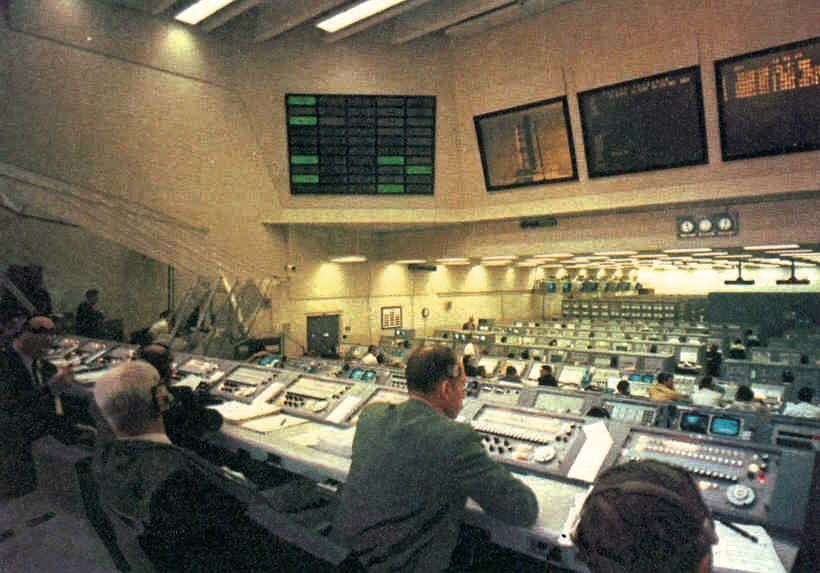
Launch Control Center at
Cape Kennedy
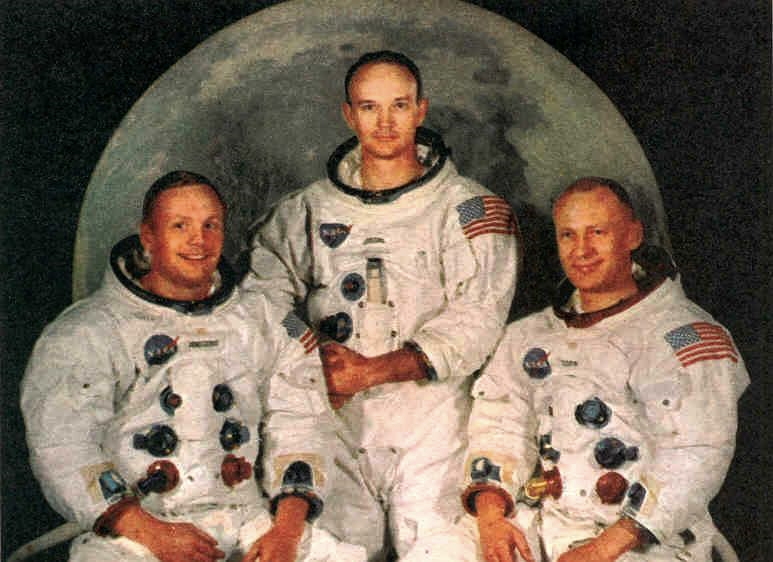
Crew of the Apollo
11
(left to right: Neil
Armstrong, commander; Michael Collins, pilot of command module
Columbia;
Edwin "Buz" Aldrin, Jr.,
pilot of the lunar module Eagle)
The Lunar module
Eagle
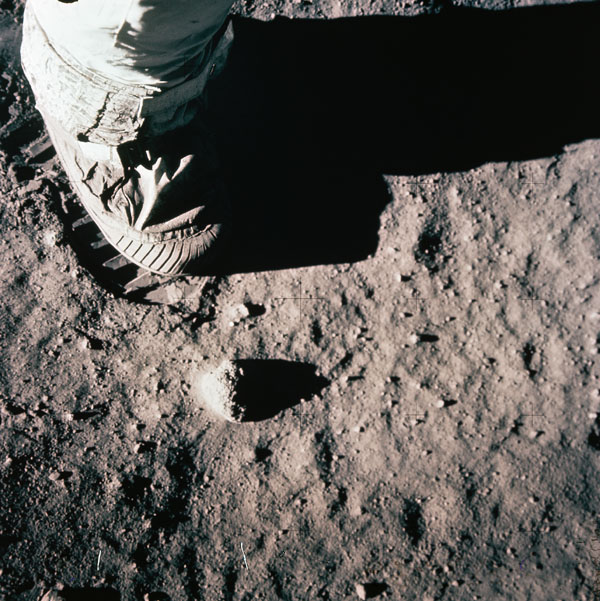
"Close-up view of an astronaut's
leg and foot and footprint in the lunar soil,
photographed with a 70mm
lunar surface camera during the Apollo 11 lunar surface
extravehicular activity.
Astronaut Michael Collins, command module pilot, remained
with the Command Service
Modules in lunar orbit while Astronauts Neil A. Armstrong,
commander, and Edwin E.
Aldrin, Jr., lunar module pilot, explored the Moon."
Picture of Aldrin taken by
Armstrong
Aldrin and US flag on the
moon

|
Just the day previous to
the moon landing another Kennedy tragedy occurred,
this time
with the last
surviving brother Teddy. A former Bobby Kennedy campaign worker
drowned (or suffocated) on July 19 (1969) when Ted's car went off a small bridge
leading from Cape Cod to
Chappaquiddick Island. Teddy got out. She did not.
| But that event was clouded a bit by the news that at very same time as the moon walk, the surviving male Kennedy (Teddy) had been involved in a tragedy when his car went off a small bridge onto the Chappaquiddick Island and the young lady that was with him died of either drowning or suffocation … although Ted managed to get himself home safely. Being a Kennedy, the details of the event never came fully to light … nor was Ted held to much account for the tragedy. |
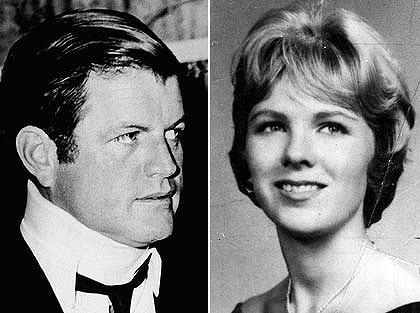
Ted Kennedy and Mary Jo
Kopechne
Kopechne: Caldwell
College yearbook
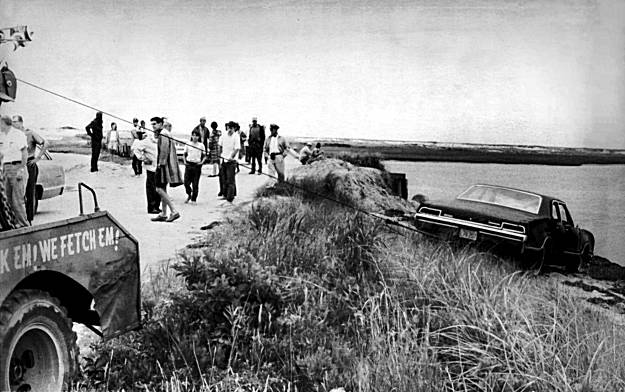
Kennedy's car towed from Chappaquiddick Sound
Kennedy being led away by police for failure to report the accident
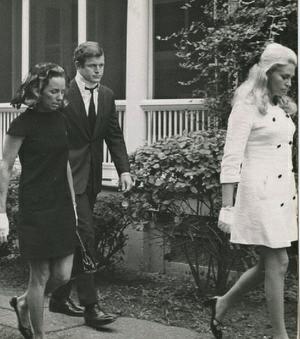
Kennedy with his sister-in-law Ethel and wife (ahead of him) at the Kopechne funeral

|
Much of the nation's youth
remain as distant as ever from this world of the adult
"Establishment" – given such dramatic expression
at the Woodstock Festival
near Bethel, New York, in mid-August
|
In mid-August of 1969 nearly a half-million Boomer youth congregated at a 600-acre farm in Upstate New York (Woodstock) to enjoy a three-day-long rock concert featuring a huge number of the major music stars of the day. But the event was more than just a music festival, it was the very clear expression of the emerging Boomer culture in all its ways, especially its idealization of both social harmony and social action, supposedly all about "love and peace" – love, which often took on a distinctly sexual character, and peace, which frequently involved drug use in order to accentuate the spiritual "coming together" of the very self-focused Boomers. Above all, it helped to give precise definition as to what it meant to be a Boomer, in dramatic distinction to the Middle-Class ways of the Boomers' parents, which in so many ways the Boomers departed from as far as possible – as a testimony as to how far they had come in securing a new freedom for themselves as a rising generation.
|
The Woodstock Music and Art Fair – August 15-17, 1969
Woodstock – August
1969
Some of the 400,000+ youth
who gathered for the 3-day festival
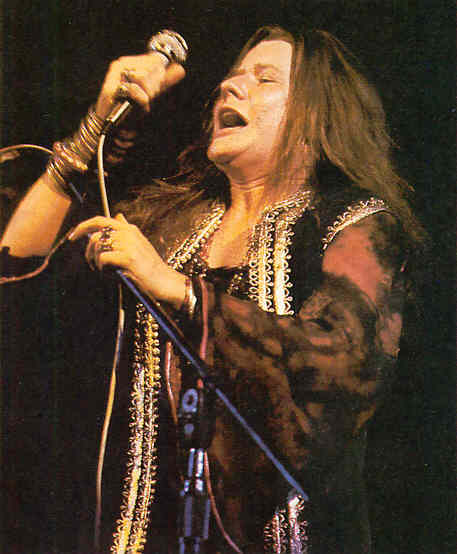
Janis Joplin – Woodstock
- August 1969
Jimi Hendrix playing at the Woodstock Festival, August 18, 1969
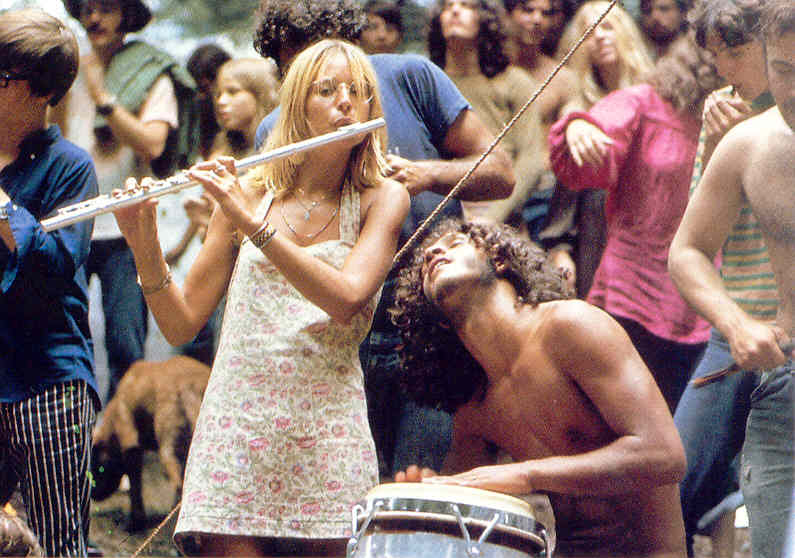
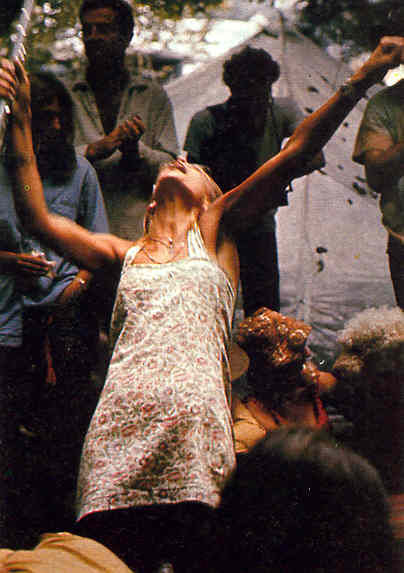
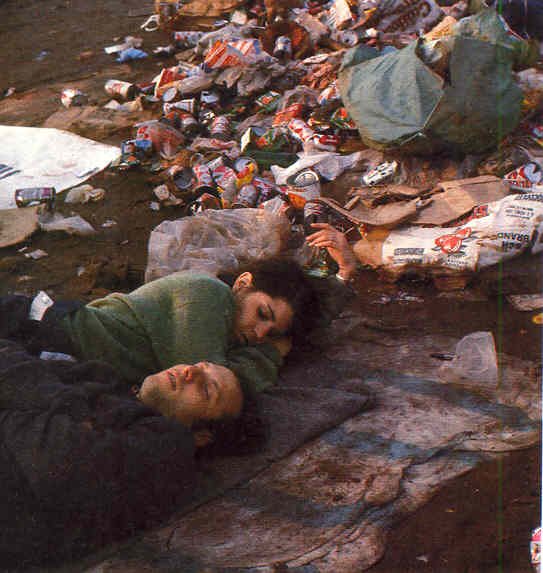
Scenes from Woodstock – August
1969

In the buff at Leon's Lake
- Woodstock – August 1969
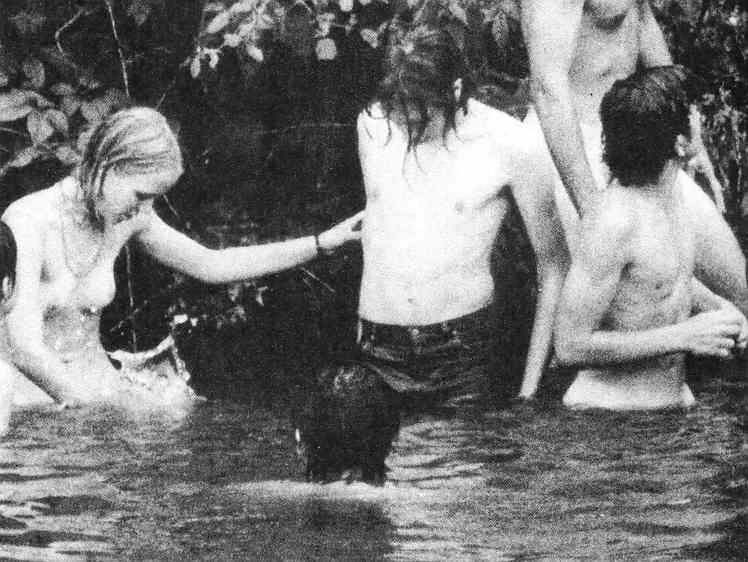
Skinny dipping at Leon's
Lake – Woodstock – August 1969
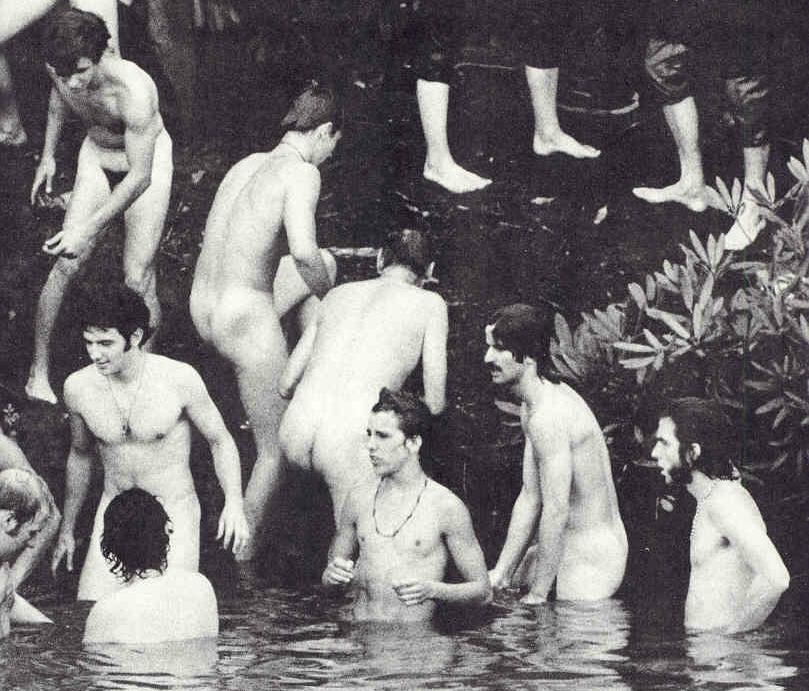
Skinny dipping at Leon's
Lake – Woodstock – August 1969
Scenes from
Woodstock
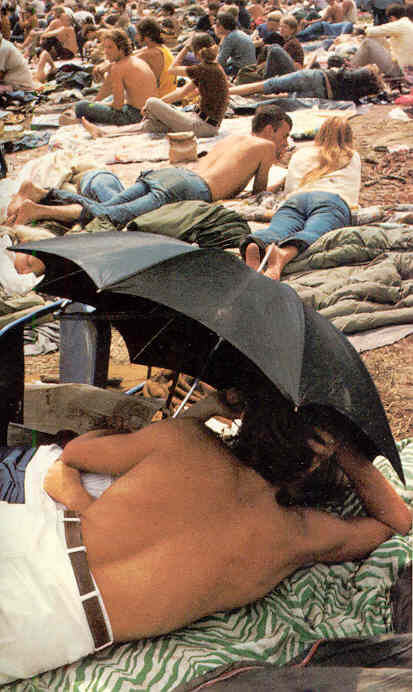
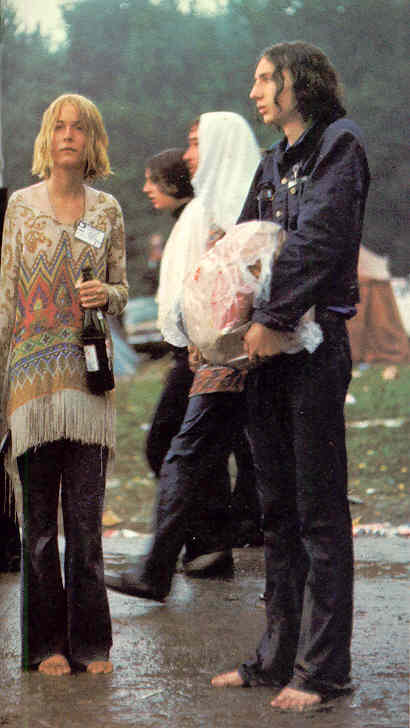
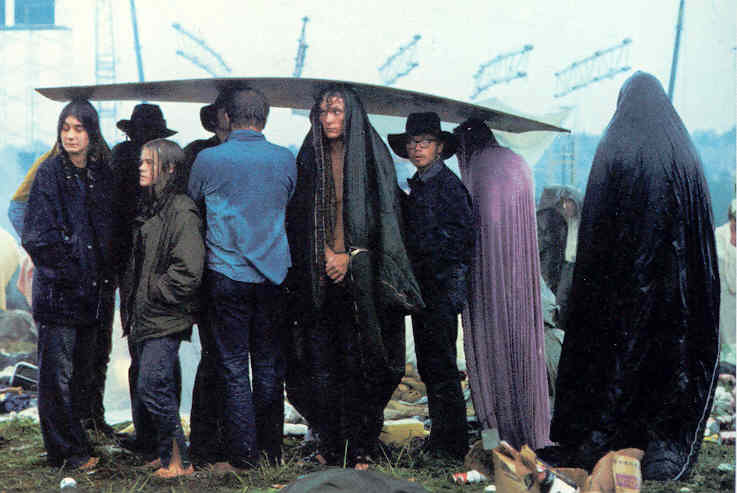
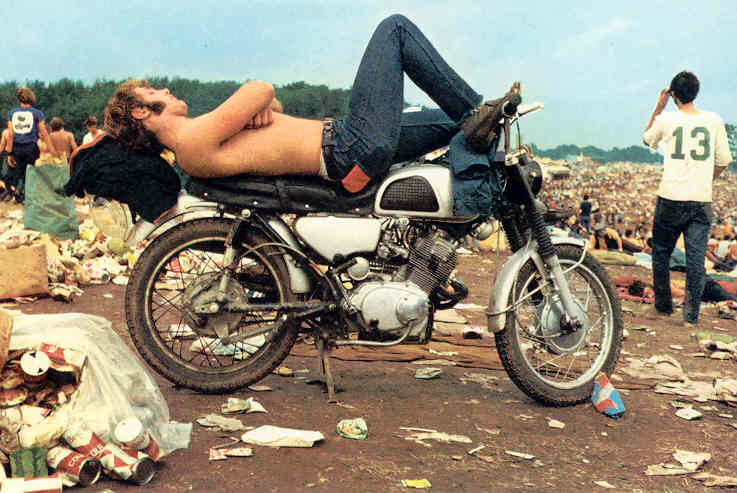

|
|
The Manson Murders, and arrest of the "Manson Family"
Sleazy Charles Manson, who convinced a number of young impressionable minds that he was some kind of very special spiritual guru, demonstrated how low hippie communal life could go. He was born into a troubled domestic environment and grew up involved in a life of petty crime (which had him in and out of prison). Later, as the hippie movement advanced through the 1960s, he took on the airs of being a songwriter, and passed himself off in Berkeley, California, which was becoming America's hippie center, as something of a hippie "guru." As a guru, he organized around himself a small commune of vulnerable girls, and moved them into the home (originally uninvited but ultimately accepting) of Beach Boy singer Dennis Wilson. This brought Mason and his "Family" into contact with the professional world of music. But finally Wilson forced Manson and the Family out of his home, and the Family eventually relocated themselves at a run-down California ranch. Manson's obsession with the Beatles and their music ultimately moved Manson to an apocalyptic spirit, as he began preparing the Family for a great race war ("Helter Skelter"), in which the Family would emerge as the supreme directors of a new era. By 1969 Manson was convinced that it was time to move on this grand event, and set off down a trail of gruesome, semi-ritualistic murder, performed by the members of the Family (principally Tex Watson, Susan Atkins, and Patricia Krenwinkel) at Manson's request. After midnight on August 9, 1969 the Family broke into the home of movie producer Roman Polanski (who himself was away in London) and murdered the inhabitants of the home (most notably Polanski's wife, pregnant actress Sharon Tate) by shootings and multiple stabbings, leaving cryptic messages written on the walls and mirrors of the home. The next evening the same group, now accompanied by Manson himself, and Leslie Van Houten and Steve Grogan, continued the murder rampage by attacking and killing a supermarket executive, Leno LaBianca and his wife in their home, again in a gruesome, ritualistic fashion. Soon thereafter (mid-October) Manson and members of his Family were arrested, but at the time only for multiple car thefts (stealing VW minibusses and converting them into dune buggies). Soon connections between Manson and his Family and the murders began to appear, and Manson and members of his Family were charged with murder. The trial (which began in June of 1970) was a national sensation, the murders having been so brutal and pointless, and Manson and his Family representing so clearly the dead end of the hippie life of drugs and fantasy.
|
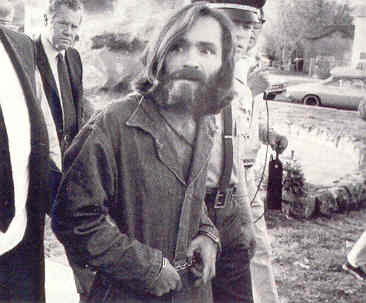
Charles Manson arrested -
1969
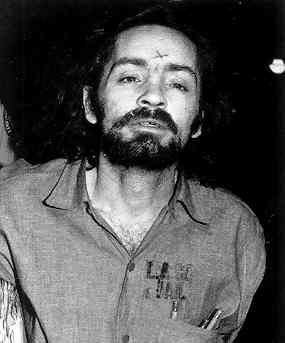
Charles Manson of Death Valley - December 1969
He demonstrated how easy it is to control the thoughts and actions of others simply through his own bizarre, but forceful personality. But Boomers were particularly susceptible, being ungrounded in any fundamental ethical principles except “be free” ... and being ready to believe any new or fascinating idea, no matter how bizarre or even grotesque. |
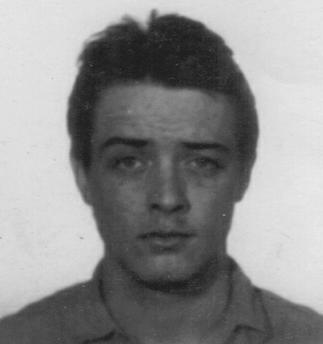
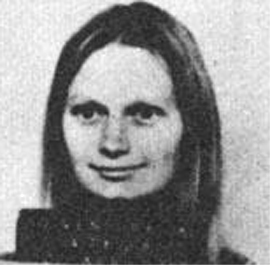
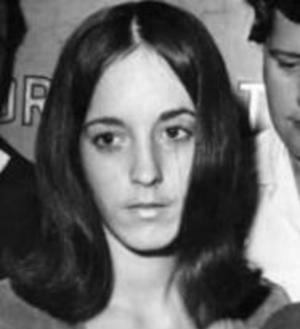
Members of the Manson Family,
murderer Robert Beausoleil – and Mary Bruner and Susan Atkins
who accompanied him – in
the capture, torture and murder of musician Gary Hinman – July 25, 1969
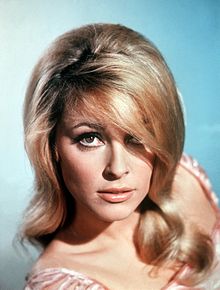
Actress Sharon Tate, 8½
- month pregnant wife of movie producer Roman Polanski, brutally
murdered (along with four others
at the Polanski house) by the "Manson Family" the night of
August 9, 1969
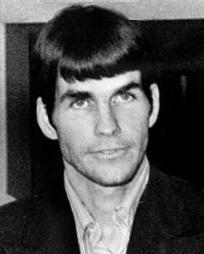

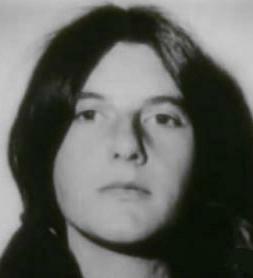
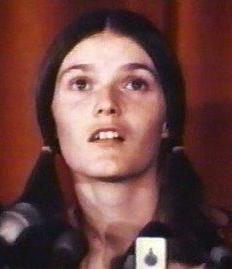
The Polanski house
murderers:
Tex Watson, Susan Atkins and Patricia Krenwinkel;
Linda Kassabian (right)
was the driver
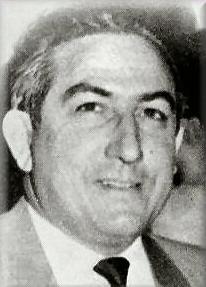
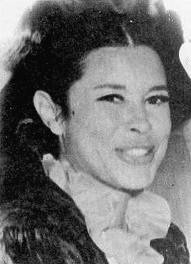
Leno and Rosemary LaBianca
murdered (a totally random brutal killing)
by the Manson Family the next
evening (August 10)
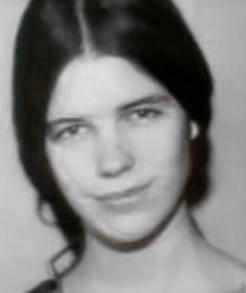
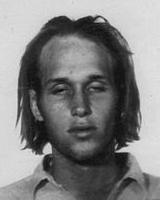
Lesli Van Houten and Steve
Grogan, plus Manson, ("to make sure it's done right")
joined the Polanski murder
team the next night to murder the LaBiancas in the same grizzly
way
Another member of the Manson family, Lynette Alice "Squeaky" Fromme,
was not part of the 1969 Tate-LaBianca murders ... but later, on September 15, 1975,
was caught with a gun aimed at U.S. President Ford
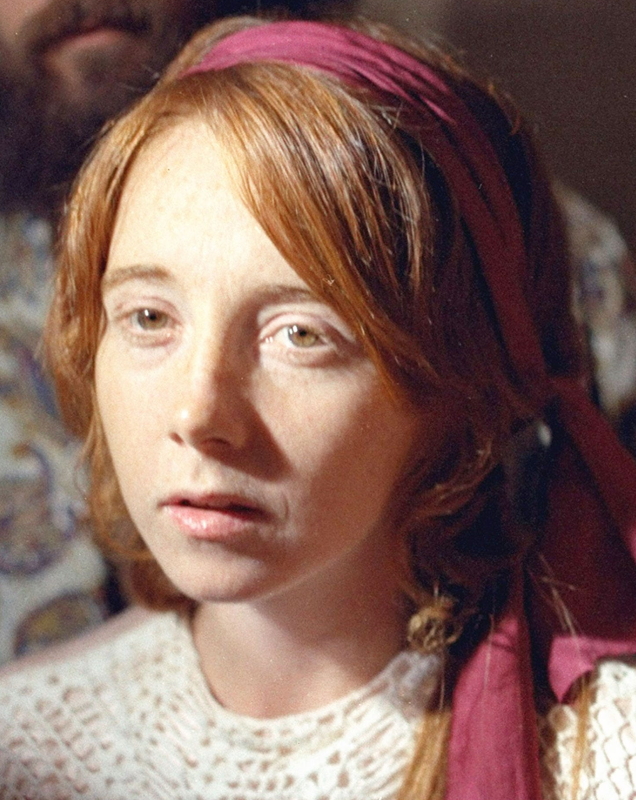

|
| De
Gaulle’s determination to pursue an independent course for France in
the realm of international politics continued to irritate America … and
other nations. In June of 1967, for a second time he vetoed
Britain’s effort to gain membership in the EEC. He would not back
down on his opposition to Britain’s joining the world of continental
Europe … a community that he believed strongly should be France-led. That same year he provided support for the rebellion of Biafran tribesmen intent on withdrawing from the Britain-supported Federal Republic of Nigeria … by doing so needlessly drawing out a civil war that Biafra was destined to lose and thereby increasing the casualty rate of the Biafrans considerably. Also that same year he flew to Canada, supposedly there to help the country celebrate its centenary (Expo 67) … but in fact there to speak boldly about the need for French-speaking Quebec to separate itself from the rest of English-speaking Canada. The Canadian government was furious … and de Gaulle immediately returned to France without completing the scheduled visit. The next year, he misinterpreted the huge gain his Gaullist party made in the 1968 elections, not understanding that this was not about him but about the conservative values his party represented – a natural reaction of French voters to the excesses of the French Leftists and their antics during the "events of May" (les événements de mai). Thus he decided to put some changes to the French constitution before the French voters in the form of a constitutional referendum … calling for the decentralizing or concentrating of powers at a more regional level – and some other changes. None of it seemed supercritical … except that de Gaulle threatened to resign if his proposals were not accepted – presuming this to be enough of a threat to get his proposals passed. After all, what was France without de Gaulle leading it! But when the referendum was held (27 April 1969), the results were only 47.6% in support, with 52.4% opposed. And as he threatened, he resigned the following day. But France did not come to its knees begging him to return to power in order to save the nation. In fact, it moved forward quite easily without him under the former Gaullist Prime Minister (1962-1968) Georges Pompidou – now French President as of June 1969. Sadly, a very broken-hearted de Gaulle died the next year (November 1970). |
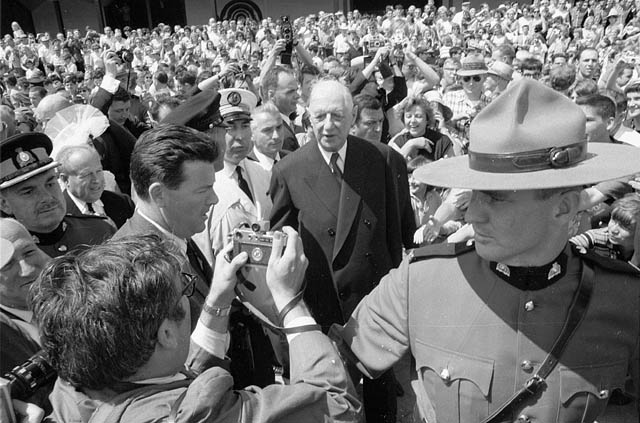
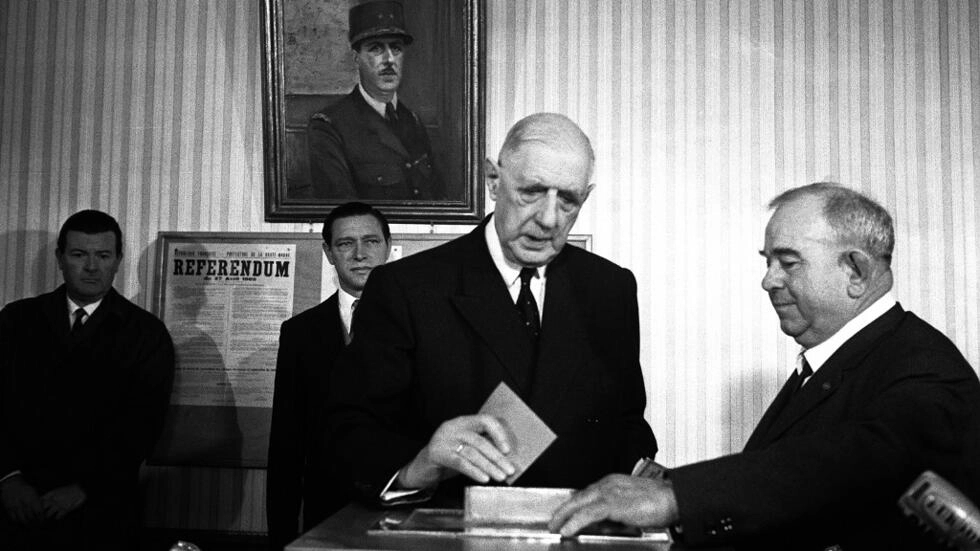

|
| In
the late 1960s, Protestant-Catholic tensions were again building up in
the largely-Protestant Northern Ireland ... still a part of Britain's
United Kingdom – and still adamantly opposed to the idea of ever being
joined to the very Catholic Irish Republic to the south. On the
other hand, the Catholic minority in Northern Ireland considered itself
discriminated against in every way possible ... and was demanding
reforms along the lines of the civil rights efforts going on in America
and elsewhere at the time. But Protestant Northern Ireland was
just as tense over this matter – well aware that the militant IRA was
still very focused on the idea of forcibly uniting Northern Ireland
with the Irish Republic. Thus when in August of 1969 – in the predominantly Catholic town of Derry – Catholics turned out to march for civil rights, Protestant militants also turned out to oppose them. The confrontation immediately turned violent ... and then made even worse when the (largely pro-Protestant) police moved into the matter. The chaos then spread to other parts of Northern Ireland, but most notably to the regional capital of Belfast ... where seven people were killed, hundreds wounded, and sections of the city burned out. At this point, British Army units were sent to Northern Ireland to separate the warring factions ... soon themselves becoming targets of the angry militants, both Protestant and Catholic. Things then settled down ... sort of. But tensions and occasional outbreaks of violence would continue to occur. In fact they would continue to do so over the many years to follow. Finally in 1998 was there some kind of agreement (the "Easter Accords") between the two parties to back off from this ongoing conflict ... although it was actually not until 2007 that the last of British troops were finally withdrawn from this testy situation. |
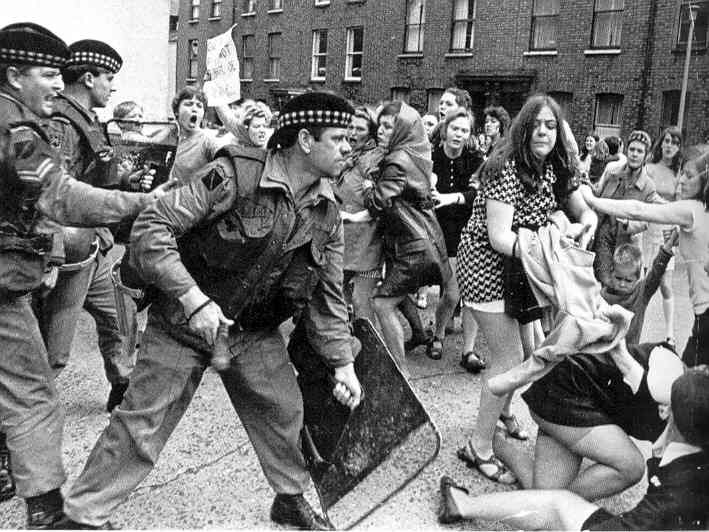
British peacekeeping troops
being drawn into the Catholic-Protestant conflict
in Northern Ireland -
1969
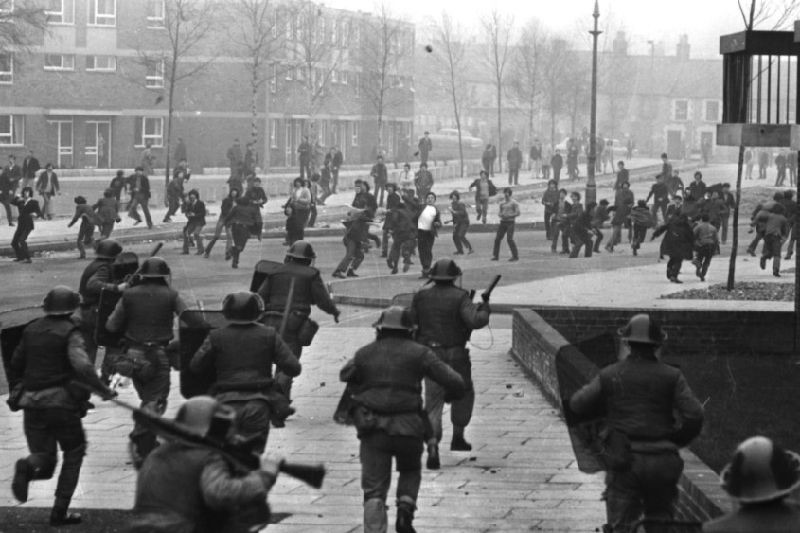
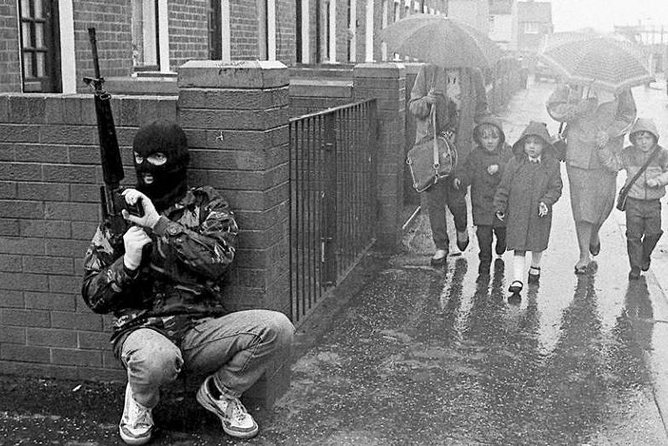
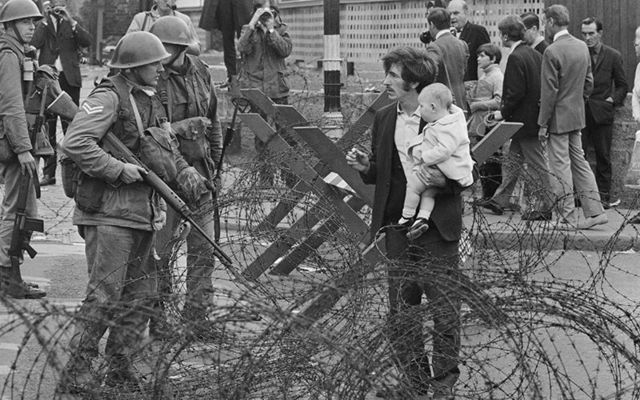


 Miles
H. Hodges
Miles
H. Hodges